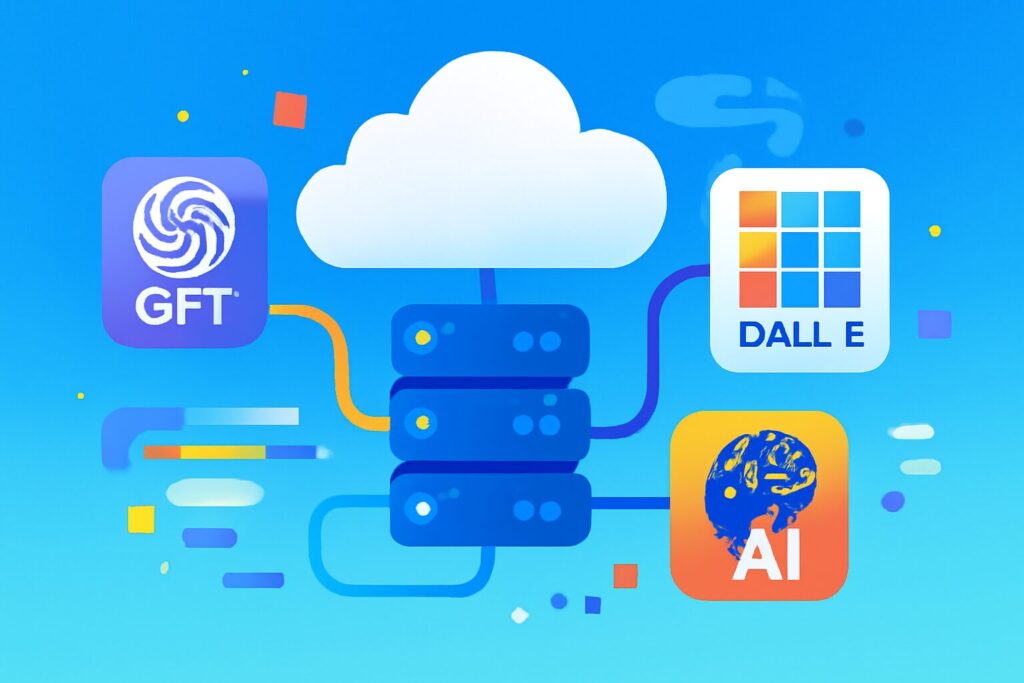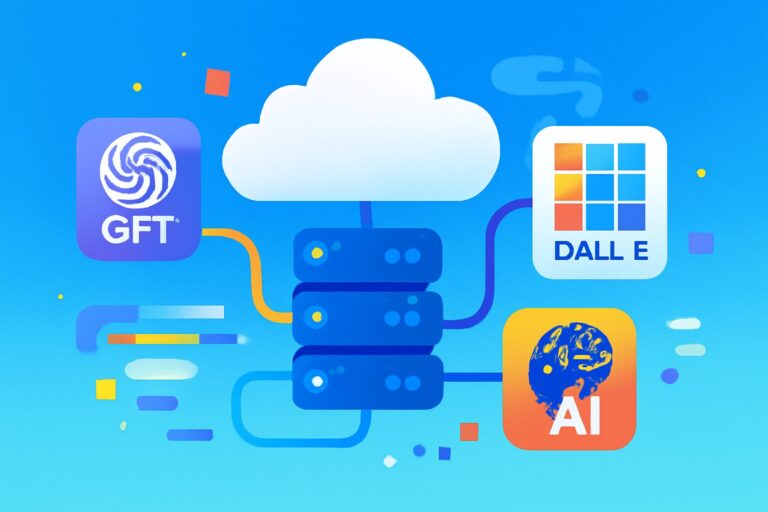# Comprehensive Guide to Azure AI Foundry: Deep Integration of OpenAI and Azure
## Introduction
In today’s rapidly evolving AI landscape, enterprises and developers seek powerful and efficient AI platforms more than ever. **Azure AI Foundry**, a result of Microsoft and OpenAI’s collaboration, offers deeply integrated AI capabilities and flexible cloud architecture, making it a preferred platform for building intelligent applications. From image generation and natural language understanding to audio processing, Azure AI Foundry delivers exceptional user experience and performance boosts. This article provides a thorough understanding of Azure AI Foundry, covering its positioning, core values, feature breakdowns, and best practices, enabling you to master this powerful AI toolbox.
—
## What is Azure AI Foundry: Positioning and Core Value
Azure AI Foundry is not just another Microsoft tool; it is an AI development platform focused on integrating OpenAI’s powerful models with Azure cloud services. It is more than a set of APIs—it provides an all-in-one platform covering model training, deployment, management, and inference. Its core value lies in delivering cutting-edge **AI capabilities** with enterprise-grade security and scalability, helping developers and businesses deploy AI models swiftly and with minimal barriers.
### Core Positioning:
– Deep integration with OpenAI models like GPT and multimodal models.
– Full lifecycle management from training, fine-tuning, deployment to monitoring.
– Security compliance and data privacy protection meeting industry and government standards.
– Industry-agnostic and scenario-flexible with customization and extensibility.
### Core Values:
| Value Point | Description |
|——————-|————————————————|
| Efficient Development | Rich APIs and SDKs with seamless experience, freeing users from maintenance |
| Customizable Models | Support for model fine-tuning and customization to match specific business needs |
| Flexible Deployment | Support for cloud and hybrid architectures, easy scalability |
| End-to-End Security | Fine-grained permission control and data encryption to protect data security |
Azure AI Foundry shines in its manageable, scalable, and hosted characteristics, suitable from startups to large enterprises. Microsoft’s official documentation confirms that Azure AI Foundry integrates Azure Machine Learning, Azure Cognitive Services, and OpenAI interfaces to provide comprehensive AI application support. [Microsoft Azure official site](https://azure.microsoft.com/en-us/services/openai-service/)
—
## Integrating OpenAI Models into Azure AI Foundry: Deployment and Invocation Workflow
Integrating OpenAI models into Azure AI Foundry is straightforward, yet mastering the full process is essential:
### 1. Environment Preparation
– Register an Azure account and subscribe to the appropriate AI services.
– Create an Azure AI Foundry workspace, configure resource groups and storage.
### 2. Model Selection and Fine-Tuning
Choose OpenAI models such as GPT-4 or GPT-3 from the model library in the Azure AI Foundry dashboard. Custom fine-tuning is supported to adapt to domain-specific corpora.
### 3. Model Deployment
Deploy inference environments with one click. Azure AI Foundry offers serverless compute architecture, handling underlying infrastructure and auto-scaling for high availability.
### 4. Model Invocation
Access model inference APIs using RESTful endpoints or Python SDK for integration with web apps, mobile, or enterprise systems.
### 5. Monitoring and Management
Real-time monitoring, logging, and performance analytics enable continuous AI service optimization.
For example, a financial company used Azure AI Foundry to integrate GPT-4 for generating financial risk assessment reports, drastically improving efficiency by receiving analyses within seconds.
—
## Core Features: Image Generation, Real-time Inference, and Audio Processing
Azure AI Foundry supports rich multimodal AI capabilities beyond text:
### Image Generation ✨
Leveraging OpenAI’s DALL·E model, users can generate high-quality images from text descriptions, beneficial for advertising, design, and education. Businesses can automate promotional graphic creation, significantly boosting creative productivity.
### Real-time Inference 🔄
It delivers millisecond-level response times, supporting scenarios like customer chatbots and intelligent Q&A systems. Microsoft’s robust cloud infrastructure ensures high concurrency and stable performance.
### Audio Processing 🔊
Features include speech-to-text, text-to-speech, and audio emotion recognition powered by Azure Cognitive Services. Developers can create smart voice assistants and meeting transcription tools rapidly.
Unified multimodal integration allows handling text, image, and audio on one platform, reducing development complexity and enhancing product competitiveness.
—
## Deep Application Scenarios of Agent Services and Semantic Kernel
Agent Services and Semantic Kernel are vital for intelligent interaction and cognitive computing within Azure AI Foundry.
### Agent Services 🤖
Driven by large models, Agent Services automate decision-making and complex task handling. For example, customer service agents can identify customer intent and invoke APIs to check orders or handle complaints, substantially increasing efficiency.
### Semantic Kernel 🌐
Microsoft’s open-source cognitive framework enables seamless connection between knowledge bases and external systems, creating semantically rich AI applications. It empowers building deeply contextual AI assistants and supports cross-system data fusion, such as content retrieval and intelligent recommendations.
Combining Agent Services and Semantic Kernel enables “smart” business processes and true digital transformation.
—
## Security and Permission Management Best Practices: Compliance and Data Protection
Security and privacy are paramount as AI platforms scale. Azure AI Foundry ensures data and model asset protection through multi-layered security mechanisms.
### Fine-grained Permission Control
Integration with Azure Active Directory (AAD) allows role-based access, ensuring only authorized users access critical models and sensitive data.
### Data Encryption and Compliance
Data is encrypted during transfer and at rest with industry-standard algorithms. Azure AI Foundry complies with GDPR, ISO 27001, SOC 2, and more, offering peace of mind for critical business data.
### Auditing and Anomaly Detection
Comprehensive audit logs, security event tracking, and automatic alerting help enterprises respond quickly to threats.
Microsoft emphasizes that even cutting-edge AI applications must rely on a solid security foundation, making Azure security services combined with AI Foundry the recommended approach to compliance and protection.
—
## Pricing and Cost Optimization Strategies: Managing Azure AI Foundry Expenses
Controlling cloud service costs is vital, especially for large-scale deployments. Here are practical tips:
– Choose models and sizes appropriately based on demand and budget.
– Use batch calls and caching to reduce invocation frequency.
– Monitor and analyze usage with Azure Cost Management to prevent waste.
– Automate shutdown of idle compute resources using Azure automation scripts.
– Opt for the right pricing plans and negotiate enterprise agreements for better rates.
These steps help maintain performance while effectively managing operational costs.
—
## Frequently Asked Questions (FAQ)
**Q1: Which OpenAI models are supported by Azure AI Foundry?**
A: Supports GPT-3, GPT-4, DALL·E, and others, including fine-tuning and customization.
**Q2: How is data security ensured in Azure AI Foundry?**
A: It uses data encryption, access controls, audit logs, and complies with multiple international standards.
**Q3: Can Azure AI Foundry services be deployed on-premises?**
A: Primarily cloud-based, but supports hybrid and edge computing for flexibility.
**Q4: What is typical inference latency?**
A: Around hundreds of milliseconds, meeting most real-time application needs.
**Q5: Is Azure AI Foundry beginner-friendly?**
A: Yes, with user-friendly interfaces, detailed docs, and SDKs, even non-AI experts can get started quickly.
**Q6: How is pricing structured?**
A: Based mainly on invocation counts and compute usage. See [Microsoft Azure pricing](https://azure.microsoft.com/en-us/pricing/details/openai-service/) for details.
—
DiLian Information Technology is empowering customers to leverage **Azure AI Foundry** for advanced AI applications and intelligent business transformation. Interested in Microsoft’s leading cloud AI services? Visit [https://www.de-line.net](https://www.de-line.net) to consult expert solutions and accelerate your AI projects safely and reliably! 🚀✨
************
The above content is provided by our AI automation poster




